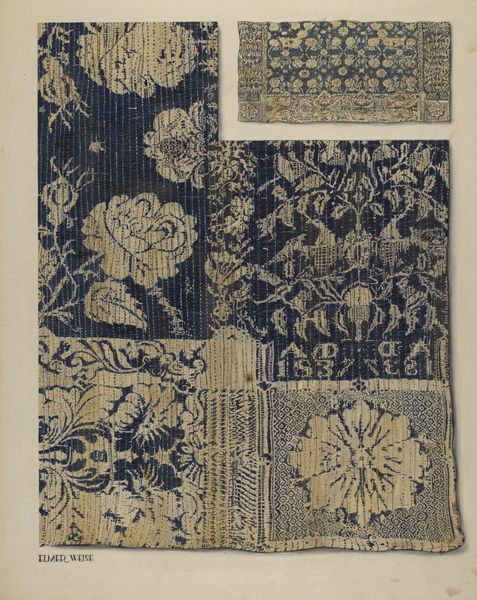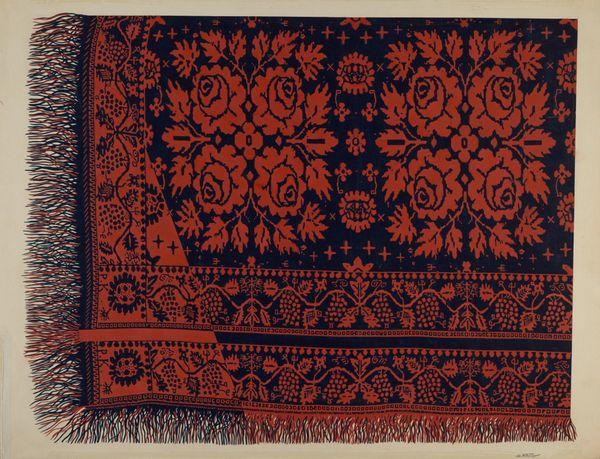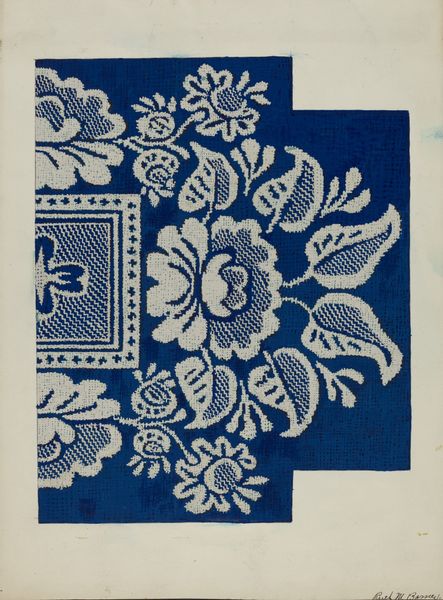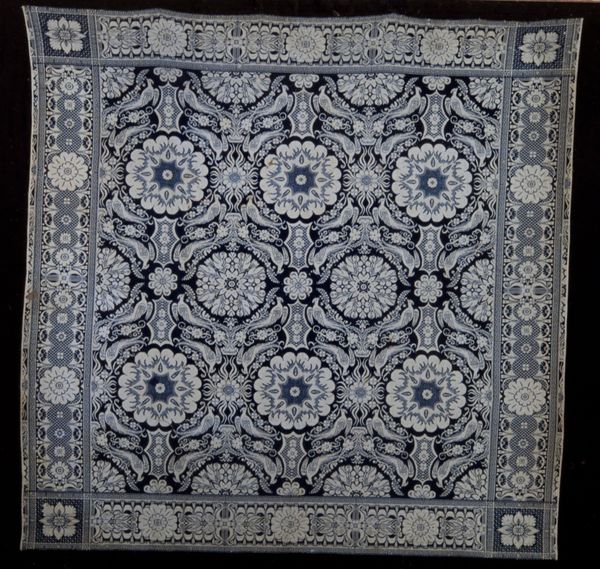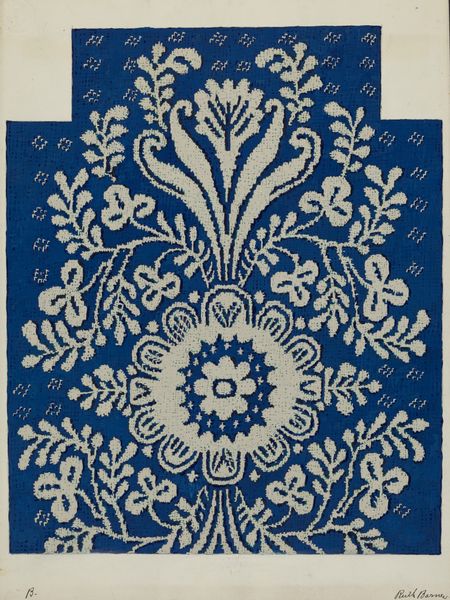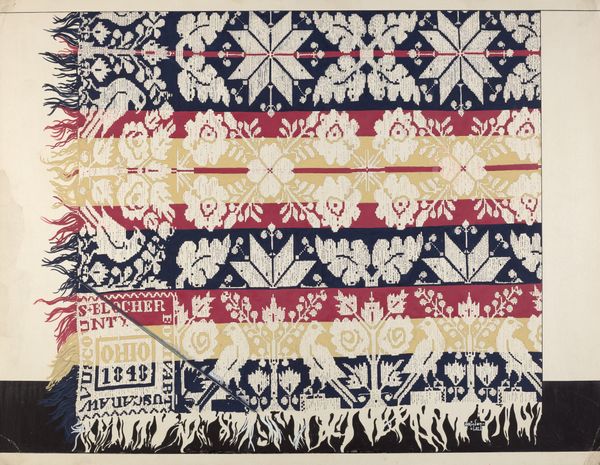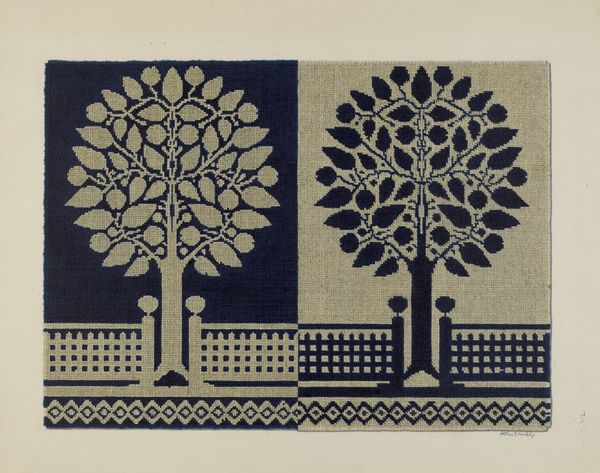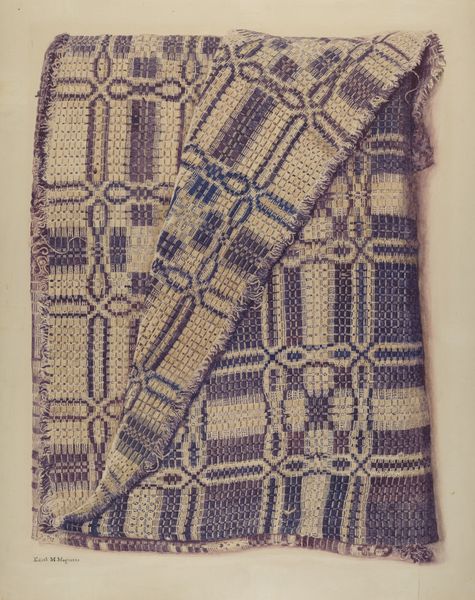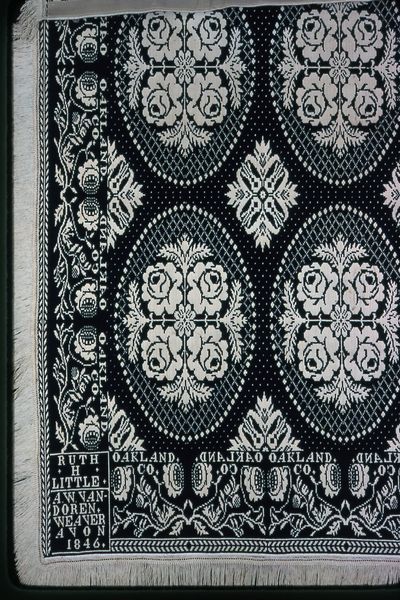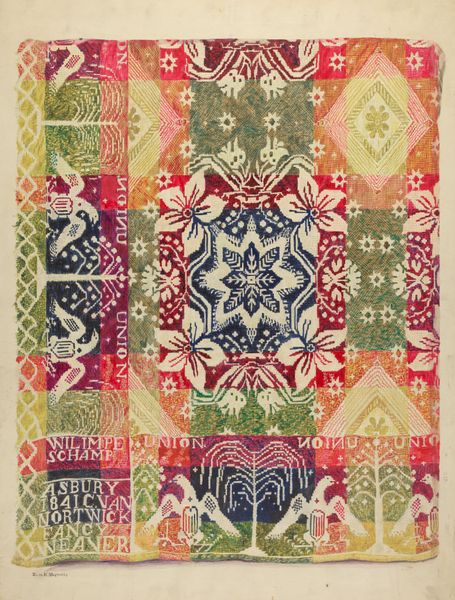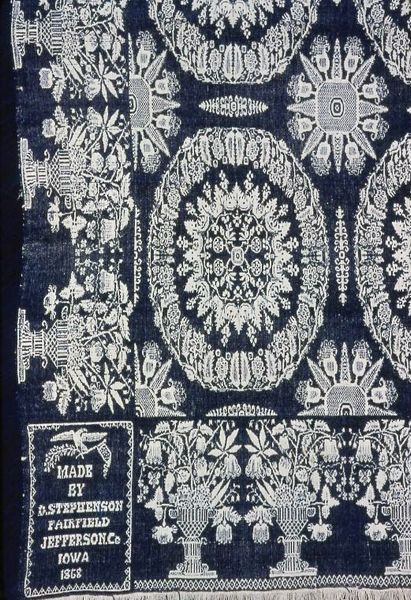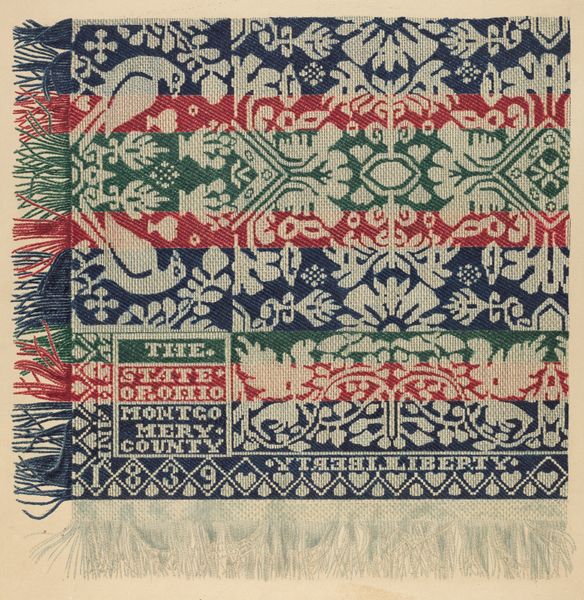
textile
#
folk-art
#
textile
#
folk-art
#
geometric
#
textile design
Dimensions: overall: 30.2 x 22.6 cm (11 7/8 x 8 7/8 in.) Original IAD Object: 96" long; 72" wide
Copyright: National Gallery of Art: CC0 1.0
Curator: This exquisite "Woven Wool Coverlet," created around 1937 by William P. Shearwood, immediately strikes me as a testament to craft, a tangible manifestation of artistry using simple means to profound effect. Editor: The striking indigo and white create such a somber mood, yet I also find a bold declaration about the intertwined threads of identity, history, and domestic life present within its materiality. Curator: Indeed. What’s compelling to me is the dedication required to produce a textile like this; consider the labour-intensive weaving techniques. We can't overlook the act of making as crucial to interpreting this artwork, particularly when boundaries between high art and craft are blurred. Editor: Precisely. And the pattern, it's very powerful; the floral and geometric elements intertwined with the eagles and stars echo American patriotic symbols, raising questions about the creator’s sense of nation and its relation to the domestic space. Is this an assertion of belonging, or a critique? Curator: Or both? And it appears, based on the writing included, to make a strong case for an agricultural base as central to nationhood. The repeated motifs remind me of the functionality often disregarded when assessing worth. Its utility, designed to protect, highlights the interplay of comfort, ideology, and the act of creation. Editor: That’s key – the intended function versus the symbolic load it carries. Looking at it through the lens of feminist theory, for instance, one might analyze how traditionally ‘feminine’ crafts are utilized here to articulate not just domesticity but a vision of national identity, typically defined through male experience. The materials here speak volumes. Curator: Shearwood is highlighting the importance of labor and process within this weaving tradition. The medium itself speaks about societal values placed upon labor, domestic life, and even agriculture. Editor: This piece offers a lens through which we might see and reconsider overlooked contributions to national discourse, acknowledging textiles as historical records infused with rich meaning. Curator: Ultimately, its creation reminds us that the stories we tell with the simplest objects can reveal so much about our past and present.
Comments
No comments
Be the first to comment and join the conversation on the ultimate creative platform.

